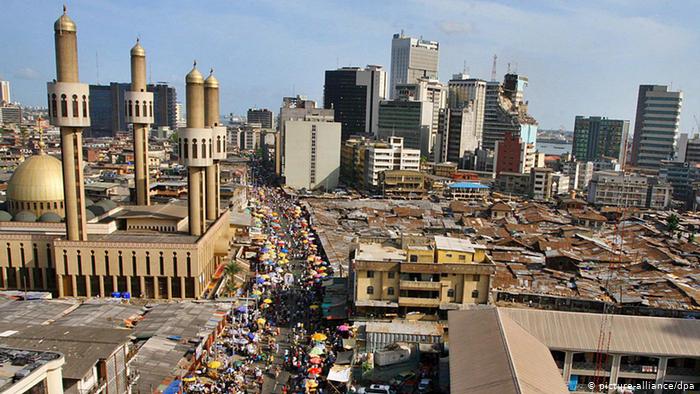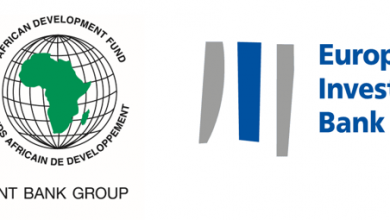W’Bank Projects Slower 2.9% For Nigeria On Lower Oil Prices, Pressure On Naira

•Says Africa Must Achieve Stability, Create Jobs, Grow, To Avert ‘Lost Decade’
A new report by the World Bank Group, on Wednesday projected a slower growth for the Nigerian and Angolan economies in 2023, due to what it says is lower commodity prices and currency pressures affecting oil and non-oil activity.
According to the report, Africa’s Pulse, a bi-annual publication of the Office of the Chief Economist in the World Bank Africa Region, Nigeria and Angola are projected to grow at 2.9% and 1.3%, owing largely to lower international prices and currency pressures affecting oil and non-oil activity.
This is made worse by the projection that the GDP of South Africa could limp by just 0.5% in 2023, as energy and transportation bottlenecks continue to bite.
It also noted the impact of the “rising instability, weak growth in the region’s largest economies, and lingering uncertainty in the global economy are dragging down growth prospects in the region.”
Other factors include the increased conflict and violence in the region that continue to weigh on economic activity, while rising fragility may be exacerbated by climatic shocks, not particularly the case of Sudan where “economic activity is expected to contract by 12%, because of the internal conflict which is halting production, destroying human capital, and crippling state capacity.”
Sub-Saharan Africa’s economic outlook, the bank said in a statement announcing the release of the report, remains bleak amid an elusive growth recovery, following which economic growth in the region “is forecast to decelerate to 2.5% in 2023, from 3.6% in 2022.”
This just as it noted how in per capita terms, growth in Sub-Saharan Africa has not increased since 2015, adding in fact that the region is projected to contract at an annual average rate per capita of 0.1% over 2015-2025.
Unless that is averted, the report noted the potential of Africa marking what it termed “a lost decade of growth in the aftermath of the 2014-15 plunge in commodity prices,” the World Bank noted.
The region’s poorest and most vulnerable people, it noted further, “continue to bear the economic brunt of this slowdown, as weak growth translates into slow poverty reduction and poor job growth,” said Andrew Dabalen, World Bank Chief Economist for Africa. “With up to 12 million young Africans entering the labor market across the region each year, it has never been more urgent for policymakers to transform their economies and deliver growth to people through better jobs.”
Despite the gloomy outlook, however, it assured that there are few bright spots, such as inflation on the continent which is expected to decline from 9.3% in 2022 to 7.3% in 2023, as well as fiscal balances that are improving in countries on the continent pursuing prudent and coordinated macroeconomic policies.
In 2023, for instance, it particularly noted the Eastern African community (EAC) that is expected to grow by 4.9% while the West African Economic and Monetary Union (WAEMU) could grow by 5.1%.
However, it lament also that debt distress remains widespread, with 21 countries at high risk of external debt distress or in debt distress as of June 2023.
Overall, current growth rates in the region are inadequate to create enough high-quality jobs to meet increases in the working-age population, drawing attention to the current situation where only a mere three million formal jobs are generated annually. This, it says, leaves many young people underemployed and engaged in casual, piecemeal, and unstable work that does not make full use of their skills.
Creating job opportunities for the youth, therefore, it continued, will drive inclusive growth and turn the continent’s demographic wealth into an economic dividend.
Stressing this point, Nicholas Woolley, World Bank Economist and contributor to the report, noted that “the urgency of the jobs challenge in Sub-Saharan Africa is underscored by the huge opportunity from demographic transitions that we have seen in other regions.
“This will require an ecosystem that facilitates private-sector development and firm growth, as well as skill development that matches business demand,” he added.
The development of labour-intensive manufacturing, the report says, seems to be missing in Africa, limiting further effects for the indirect job creation in support services and international trade.
This, it is believed, may be partly due to a lack of capital, which continues to hamper the structural transformation required for good quality jobs. While the region contributes 12% of the global working age population, Sub-Saharan Africa owns only 2% of the global capital stock. This means people have fewer assets with which to be productive in Sub-Saharan Africa, compared to other regions.
The report identified a set of policies to overcome hurdles and unleash job creation in Sub-Saharan Africa, including:
Cost-effective private sector reforms, focused on increasing competition, uniform policy enforcement across firm sizes, and regulatory alignment with regional trading partners. Governments can also help identify and support early-stage growth of businesses through more inclusive procurement practices and promotion of local businesses abroad.
Investment in education, it said, is necessary to boost semi-skilled occupations for the region. Interventions that improve learning in school are more effective than those increasing school attendance alone, while vocational education can be useful for addressing the underemployed and those who have missed out on education as children.
Education of girls and access to jobs for women, the report noted, can equally reduce potential productivity loss from the misallocation of female labor. Cash transfers have proven effective in increasing girls’ school enrollment and attendance, as well as in curbing pregnancies among school-age girls.






